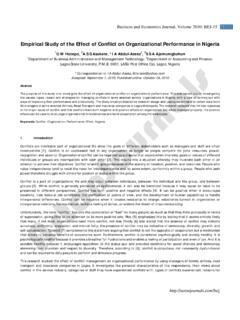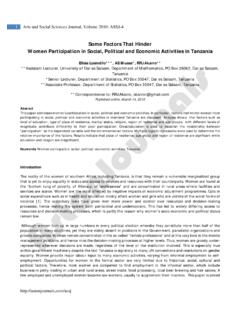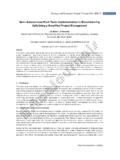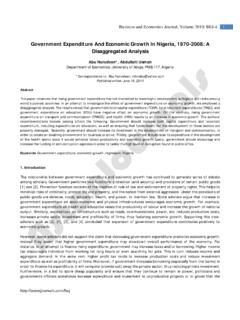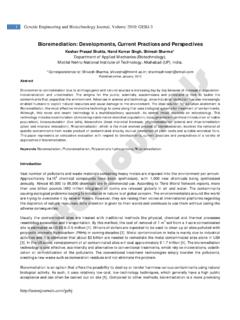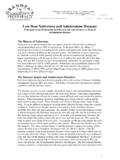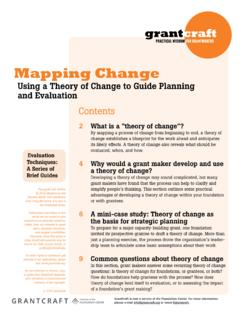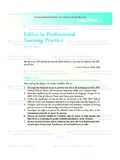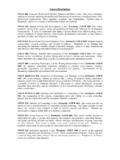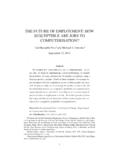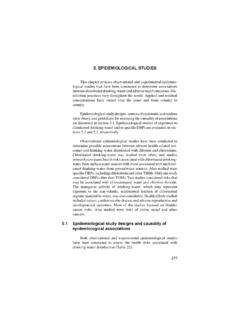Transcription of Nanotechnology: A Novel Tool for Aquaculture and …
1 1 Fisheries and Aquaculture Journal, Volume 2011: FAJ-16 Nanotechnology: A Novel Tool for Aquaculture and Fisheries Development. A Prospective Mini-Review *MA Rather, R Sharma, M Aklakur, S Ahmad, N Kumar, M Khan, VL Ramya Central Institute of Fisheries Education, Mumbai 400061 (India). *Correspondence to: Mohd Ashraf Rather, Accepted: March 10, 2011; Published: March 29, 2011 Abstract Nanotechnology has a tremendous potential to revolutionize agriculture and allied fields including Aquaculture and fisheries. It can provide new tools for Aquaculture , fish biotechnology, fish genetics, fish reproduction and aquatic health etc. Nanotechnology tools like nanomaterials, nanosensors, DNA nanovaccines, Gene delivery and smart drug delivery etc.
2 Have the potential to solve many puzzles related to animal health, production, reproduction, prevention and treatment of diseases. It is sensible to presume that in the upcoming years, nanotechnology research will reform the science and technology and will help boost livestock production. Nanotechnology applications in the fish processing industry can be utilized to detect bacteria in packaging, produce stronger flavors, colour quality, and safety by increasing the barrier properties. This paper presents the review of nanotechnology and its applications in Aquaculture and fisheries. Keywords: Nanotechnology; Nanomaterial; Nanosensors; DNA nanovaccine; Aquaculture .
3 1. Introduction Nanotechnology is a highly promising technology that spans many areas of science and technological applications. Rapid advancements in nanosciences and nanotechnologies in recent years have opened up new horizons for many industrial and consumer sectors that have been regarded as the hotbed of a new industrial revolution including agriculture and allied sectors. Among the recent advancements in science, nanotechnology is fast emerging as the new science and technology platform for the next generation of development and transformation of agri-food systems [1] as well as for improving the conditions of the poor people.
4 2. Definition Nanotechnology has been defined by the U. S. National Nanotechnology Initiative (NNI) as understanding and control of matter at dimensions of roughly 1 to 100 nm where unique phenomena enable Novel applications . More elaborately, it may be defined as the study, design, creation, synthesis, manipulation and application of functional materials, devices, and systems through control of matter at the nanometer scale (1-100 nanometers, one nanometer being equal to 1 x 10-9 of a meter), that is, at the atomic and molecular levels, and the exploitation of Novel phenomena and properties of matter at that scale . Several applications of nanotechnology for Aquaculture production are being developed.
5 With a strong history of adopting new technologies, the highly integrated fish farming industry may be among the best to incorporate and commercialise nanotech products. 3. Nanotechnology in Agrifood Sector Globally, the potential of nanotechnology in the agrifood sector has been identified and been attracting significant investment. Currently, over 300 nanofood products are available in the international markets. According to a recent study by Helmuth Kaiser Consultancy (Germany), the nanofood market is expected to surge from USD billion in 2004 to USD 20 billion by 2010. The report suggests that with more than 50% of the world population, the largest market for nanofood in 2010 will be Asia, led by China.
6 E-ISSN: 21503508 2 Review Source: Helmuth Kaiser Consultancy, 2004 4. Nanotechnology in Aquaculture and Fisheries The fisheries and Aquaculture industry can be revolutionized by using nanotechnology with new tools like rapid disease detection, enhancing the ability of fish to absorb drugs like hormones, vaccines and nutrients etc. rapidly. As per National Science Foundation (USA), current prediction estimates the emergence of value of the global nanotechnology industry at USD one trillion by 2015. This could be possible due to vast potential of nanotechnology not only in electronic and materials science but also in humans, animal food and agriculture sectors involving Aquaculture and its application in biomedical and biological sciences for analysis of biomolecules, cancer therapy, development of non-viral vectors for gene therapy, as transport vehicle for DNA, protein or cells; targeting drug delivery, clinical diagnosis and therapeutics etc.
7 Although much of development research is needed to enhance the potential use of nanotechnology in Aquaculture , at present, there are numerous glimpses of the future application of this technology in fish health management, water treatment in Aquaculture , animal breeding, harvest and post-harvest technology. The areas related to Aquaculture and fisheries where nanotechnology can be applied are: DNA nano-vaccines Outbreak of disease is one of the major stumbling blocks in the development and sustainability of Aquaculture . A number of approaches have been made in attempts to solve disease problem in Aquaculture , one among these is vaccination.
8 The use of oil emulsion as adjuvant in this effort may cause major drawbacks as some fishes and shellfishes show unacceptable levels of side effects. In this context, use of nanoparticle carriers like chitosan and poly-lactide-co-glycolide acid (PLGA) [2] of vaccine antigens together with mild inflammatory inducers may give a high level of protection to fishes and shellfishes not only against bacterial diseases, but also from certain viral diseases with vaccine-induced side effect. Further, the mass vaccination of fish can be done using nanocapsules containing nano-particles. These will be resistant to digestion and degradation. These nanocapsules contain short strand DNA which when applied to water containing fishes are absorbed into fish cells.
9 The ultrasound mechanism is used to break the capsules which in turn release the DNA thus elicting an immune response to fish due to the vaccination. Similarly, oral administration of these vaccines and site-specific release of the active agent for vaccination will reduce the cost and effort of disease management, application of drug and vaccine delivery etc., at the same cost of feeding leading to sustainable Aquaculture . Briefly stated, nanoparticles are used as oral drug carriers for several reasons: 1) Improvement of the bioavailability of drugs with poor absorption characteristics [3] 2) Prolongation of the residence time and digestive stabilisation of drugs in the intestine.
10 3) High dispersion at the molecular level and consequently efficient absorption. 4) Delivery of vaccine antigens to gut-associated lymphoid tissue [4] and 5) Control of the release of the drugs [5] 3 Fisheries and Aquaculture Journal, Volume 2011: FAJ-16 Gene delivery The development of new carrier systems for gene delivery represents an enabling technology for treating many genetic disorders. However, a critical barrier to successful gene therapy remains the formulation of an efficient and safe delivery vehicle. Non-viral delivery systems have been increasingly proposed as alternatives to viral vectors owing to their safety, stability and ability to be produced in large quantities [6] Some approaches employ DNA complexes containing lipid, protein, peptide or polymeric carriers, as well as ligands capable of targeting DNA complexes to cell-surface receptors on the target cells and ligands for directing the intracellular traffic of DNA to the nucleus.
